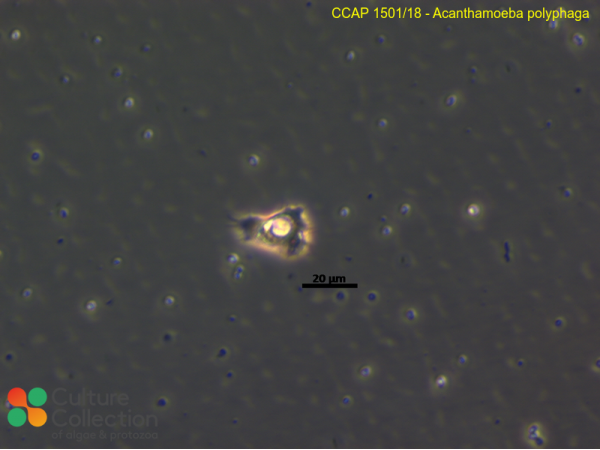References [ 21 ]
Gaze WH, Burroughs N, Gallagher MP & Wellington EMH (2003) Interactions between Salmonella typhimurium and Acanthamoeba polyphaga, and observation of a new mode of intracellular growth within contractile vacuoles. Microbial Ecology 46: 358-369.
Gião MS, Wilks SA, Azevedo NF, Vieira MJ & Keevil CW (2009) Validation of SYTO 9/propidium iodide uptake for rapid detection of viable but noncultivable Legionella pneumophila Microbial Ecology 58: 56-62.
Lorenzo-Morales J, Ortega-Rivas A, Foronda P, Martínez E & Valladares B (2005) Isolation and identification of pathogenic Acanthamoeba strains in Tenerife, Canary Islands, Spain from water sources. Parasitology Research 95: 273-277.
Mura M, Bull TJ, Evans H, Sidi-Boumedine K, McMinn L, Rhodes G, Pickup R & Hermon-Taylor J (2006) Replication and long-term persistence of bovine and human strains of Mycobacterium avium subsp. paratuberculosis within Acanthamoeba polyphaga. Applied and Environmental Microbiology 72: 854-859.
Lorenzo-Morales J, Ortega-Rivas A, Foronda P, Abreu-Acosta N, Ballart D, Martínez E & Valladares B (2005) RNA interference (RNAi) for the silencing of extracellular serine proteases genes in Acanthamoeba: Molecular analysis and effect on pathogenicity. Molecular and Biochemical Parasitology 144: 10-15.
Ortega-Rivas A, Lorenzo-Morales J, Martínez E, Villa M, Clavel A, Valladares B & del Castillo A (2005) A specific primer pair for the diagnosis and identification of Acanthamoeba astronyxis by random amplified polymorphic DNA-polymerase chain reaction. Journal of Parasitology 91: 122-126.
DOI: none
Tsibidis GD, Burroughs NJ, Gaze W & Wellington EMH (2011) Semi-automated Acanthamoeba polyphaga detection and computation of Salmonella typhimurium concentration in spatio-temporal images. Micron 42: 911-920.
Friman VP, Ghoul M, Molin S, Johansen HK & Buckling A (2013) Pseudomonas aeruginosa adaptation to lungs of cystic fibrosis patients leads to lowered resistance to phage and protist enemies. PLoS ONE 8(9): e75380.
Coulon C, Collignon A, McDonnell G & Thomas V (2010) Resistance of Acanthamoeba cysts to disinfection treatments used in health care settings. Journal of Clinical Microbiology 48: 2689-2697.
Ovrutsky AR, Chan ED, Kartalija M, Bai X, Jackson M, Gibbs S, Falkinham III JO, Iseman MD, Reynolds PR, McDonnell G & Thomas V (2013) Cooccurrence of free-living amoebae and nontuberculous mycobacteria in hospital water networks, and preferential growth of Mycobacterium avium in Acanthamoeba lenticulata. Applied and Environmental Microbiology 79: 3185-3192.
Wheat WH, Casali AL, Thomas V, Spencer JS, Lahiri R, Williams DL, McDonnell GE, Gonzalez-Juarrero M, Brennan PJ & Jackson M (2014) Long-term survival and virulence of Mycobacterium leprae in amoebal cysts. PloS Neglected Tropical Diseases 8: e3405.
Vieira A, Seddon AM & Karlyshev AV (2015) Campylobacter - Acanthamoeba interactions. Microbiology 161: 933-947.
Friman VP, Dupont A, Bass D, Murrell DJ & Bell T (2015) Relative importance of evolutionary dynamics depends on the composition of microbial predator-prey community. The ISME Journal 10: 1352-1362.
Verani M, Di Giuseppe G, Tammaro C & Carducci A (2016) Investigating the role of Acanthamoeba polyphaga in protecting Human Adenovirus from water disinfection treatment. European Journal of Protistology 54: 11-18.
Vaerewijck MJM, Sabbe K, Baré J, Spengler H-P, Favoreel HW & Houf K (2012) Assessment of the efficacy of benzalkonium chloride and sodium hypochlorite against Acanthamoeba polyphaga and Tetrahymena spp. Journal of Food Protection 75: 541-546.
Casini B, Baggiani A, Totaro M, Mansi A, Costa AL, Aquino F, Miccoli M, Valentini P, Bruschi F, Lopalco PL & Privitera G (2017) Detection of viable but non-culturable Legionella in hospital water network following monochloramine disinfection. Journal of Hospital Infection -: -.
Thomson S, Rice CA, Zhang T, Edrada-Ebel R, Henriquez FL & Roberts CW (2017) Characterisation of sterol biosynthesis and validation of 14α-demethylase as a drug target in Acanthamoeba Scientific Reports 7: 8247.
Sanchez-Hidalgo A, Obregón-Henao A, Wheat WH, Jackson M, Gonzalez-Juarrero M (2017) Mycobacterium bovis hosted by free-living-amoebae permits their long-term persistence survival outside of host mammalian cells and remain capable of transmitting disease to mice Environmental Microbiology 19: 4010-4021.
Fuerst, PA (2023) The status of molecular analyses of isolates of Acanthamoeba maintained by international culture collections. Microorganisms 11(2): 295.
Fuerst PA & Booton GC (2020) Species, sequence types and alleles: Dissecting genetic variation in Acanthamoeba Pathogens 9(7): 534.
Corsaro D (2022) Exploring LSU and ITS rDNA sequences for Acanthamoeba identification and phylogeny Microorganisms 10(9): 1776.













